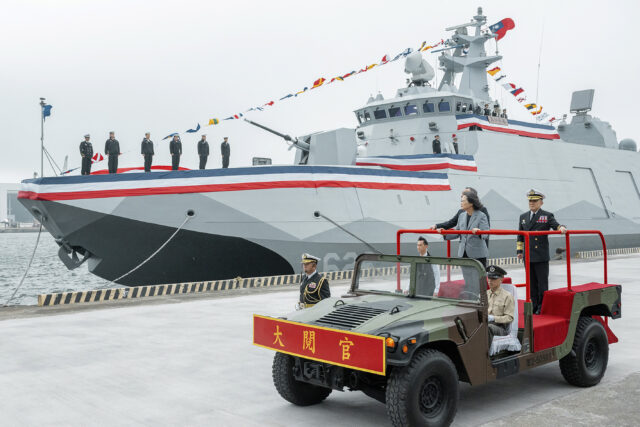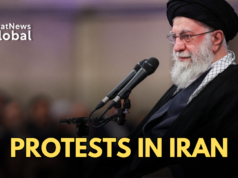Taiwan has added two new navy ships to protect itself from China, which is increasing its navy and air force presence near the island.
Taiwan’s defence ministry said it detected nine Chinese planes and six ships operating around the island between Tuesday afternoon and Wednesday morning.
The pair of Tuo Chiang class corvettes completes the first order of six of the domestically produced catamarans with stealth capabilities. The ships are relatively small, capable of carrying just 41 sailors and officers, but are fast and highly manoeuvrable and carry a range of missiles and deck guns aimed at countering larger Chinese vessels and rocketry.
China claims Taiwan as its own territory and has threatened to take it over by force if necessary. On Tuesday, departing President Tsai Ing-wen led the commissioning ceremony at the Suao port in northern Taiwan, highlighting her efforts to rejuvenate the country’s defence sector. This includes significant arms acquisitions and backing from Taiwan’s crucial ally, the United States.
Tsai has also fast-tracked the production of trainer jets and the island’s first home built submarines, sometimes pushing budgets for such purchases through the legislature against resistance from representatives of the opposition Nationalist Party, which favours eventual unification with China.
Ma Ying-jeou, the last president from the Nationalists, also known as the KMT, is reportedly planning a visit to China next month that could include a meeting with Communist Party leader Xi Jinping.
Taiwan was colonised by China in the 1600s but later taken over by Japan, before reverting to the Republic of China at the end of World War II. The sides then split again amid the Chinese Civil War in 1949. Xi has been building his military with an eye to consolidating China’s territorial claims throughout the Pacific, the South China Sea and along the contested high-mountain border with India.
China boasts the world’s largest standing military and biggest navy — with three aircraft carriers — but has not fought in a major conflict since its brief 1979 invasion of Vietnam. Since then, its military budget has ballooned to the world’s second largest behind the U.S., alongside a huge expansion of its economy, which is now showing signs of losing steam.
Most recently, friction between patrol vessels from the sides near Taiwan-controlled islands just off the Chinese coast have renewed concerns about a conflict that could draw in the U.S., which is legally bound to ensure Taiwan can defend itself and considers all threats to the island as matters of “grave concern.”
While vastly outgunned, Taiwan’s military has been bolstered by new weaponry and an extension of the universal period of national service for men from four months to one year. Its air force, navy and missile corps also respond to near-daily incursions by Chinese ships and planes.
Taiwan’s Defence Ministry says it is on alert for a Chinese sneak attack, possibly targeting Tsai or Vice President William Lai, who will take over the top office in May. Both are despised as separatists by Beijing. Recent Taiwanese media reports have shown satellite photos of Chinese People’s Liberation Army training grounds including mock-ups of the neighbourhood surrounding Taipei’s Presidential Office Building.
With inputs from AP
Research Associate at StratNewsGlobal, A keen observer of #China and Foreign Affairs. Writer, Weibo Trends, Analyst.
Twitter: @resham_sng





